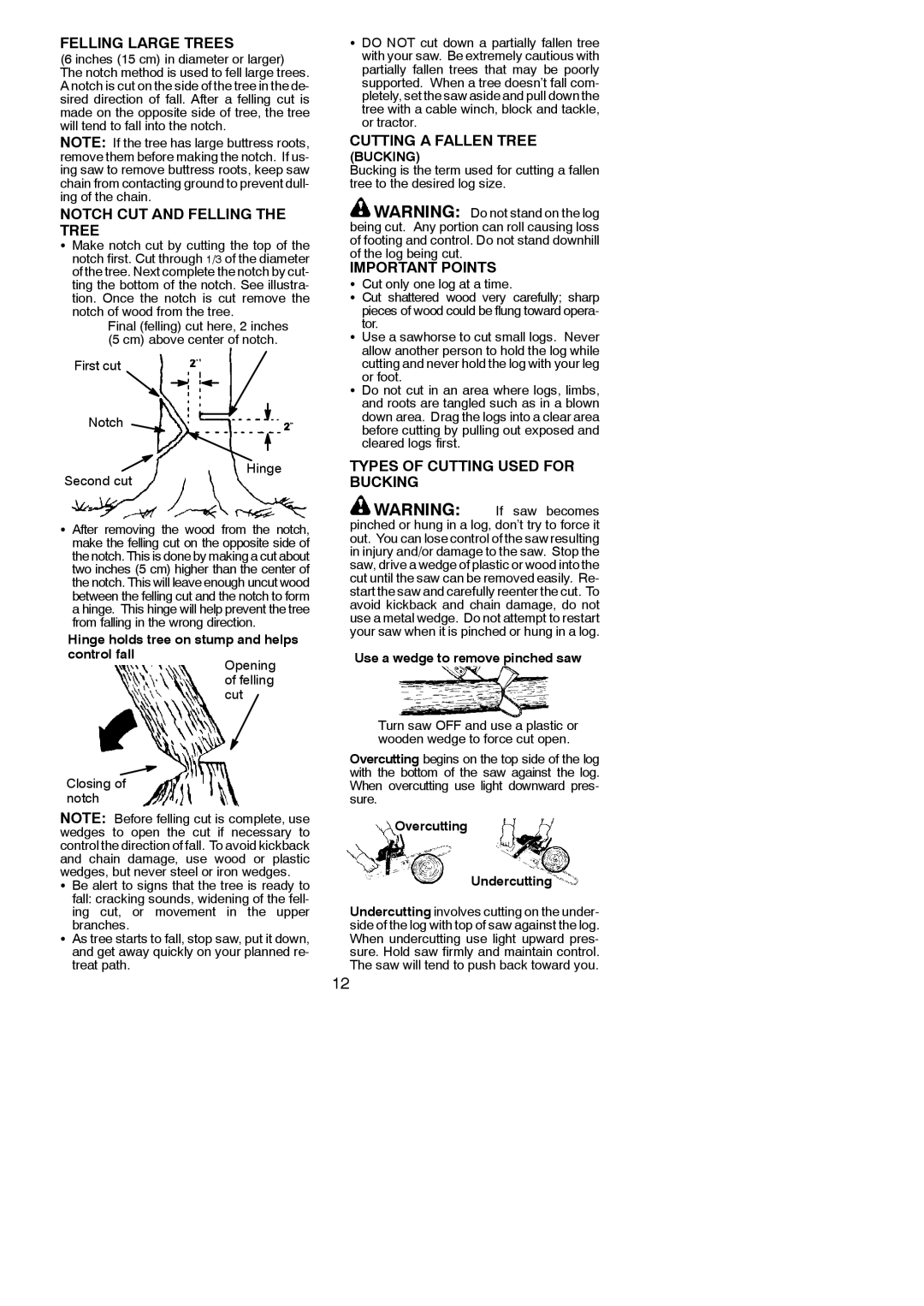P4018 P4018WM, P3516PR, P4018WT, P3314WS, P3818AV P4018AV specifications
The Poulan brand has established itself as a reliable name in outdoor power equipment, particularly with its diverse range of chainsaws designed for various cutting needs. The models P4018AV BH, P3314WSA, P3416, P3818AV, P4018AV, P3314WS, and P4018WT offer users cutting-edge technology and features tailored for efficiency, durability, and ease of use.The P4018AV BH is a standout model featuring a powerful 40cc, 2-cycle engine that delivers robust cutting performance. Equipped with an anti-vibe handle system, it minimizes user fatigue during extended use. Its 18-inch cutting bar increases the cutting capacity, making it suitable for larger trees and branches. The tool-less chain tensioning system allows for quick adjustments, ensuring optimal performance without the need for additional tools.
The P3314WSA offers a 33cc engine, making it a lightweight option for casual users. This model is particularly suitable for homeowners and novice users who require a dependable chainsaw for light to moderate cutting tasks. The 14-inch guide bar provides excellent maneuverability, while the automatic oiler ensures continuous lubrication of the chain for smoother operation.
Moving to the P3416, this chainsaw is well-balanced and powered by a 34cc engine. With a 16-inch cutting bar, it strikes a perfect balance between power and portability, making it ideal for pruning and small to medium tree felling. The high visibility wrap handle provides extra comfort and control during operation.
The P3818AV further enhances user experience with its advanced anti-vibration technology, which significantly reduces the vibrations felt through the handles. This model features an 18-inch guide bar, making it versatile for various cutting tasks, from firewood to storm cleanup.
The P4018AV and P4018WT bring additional power to the table. The P4018AV has a similar engine and features to the BH model but in a different configuration, while the P4018WT is designed for tougher jobs with a fully-wrapped handle for improved grip and handling. The rugged construction of both models ensures they can withstand rigorous use in demanding environments.
Together, these Poulan chainsaws provide a range of features that cater to different needs—from light gardening projects to heavy-duty logging tasks. With a combination of power, ergonomic design, and innovative technology, Poulan chainsaws stand out as reliable tools for outdoor enthusiasts and professionals alike.

